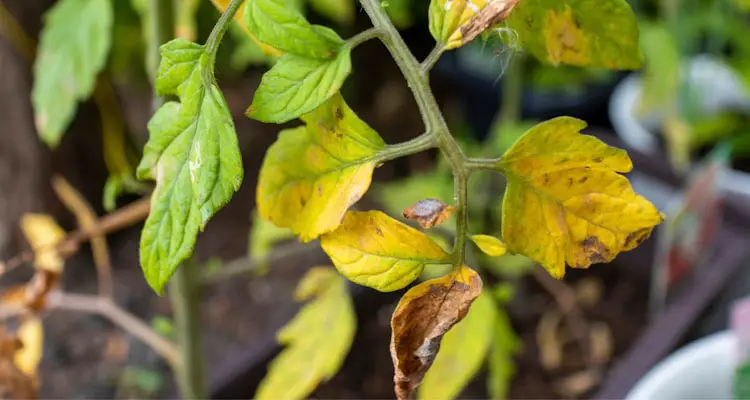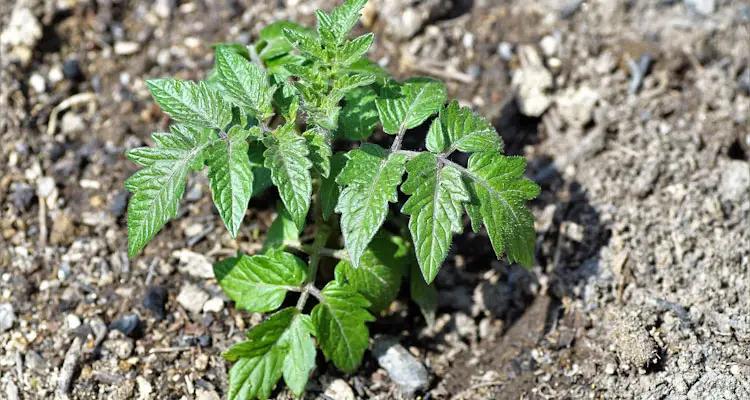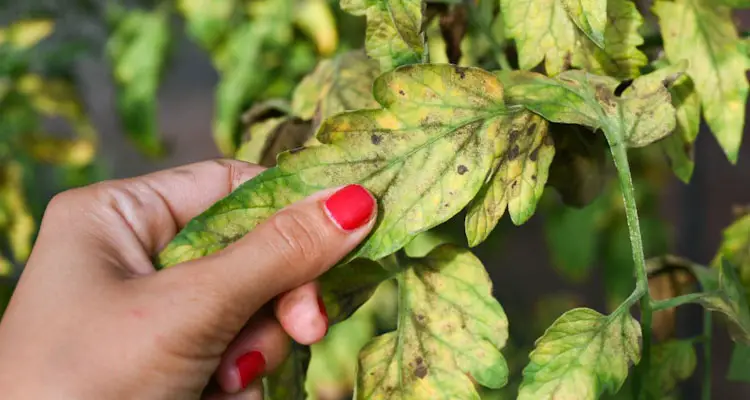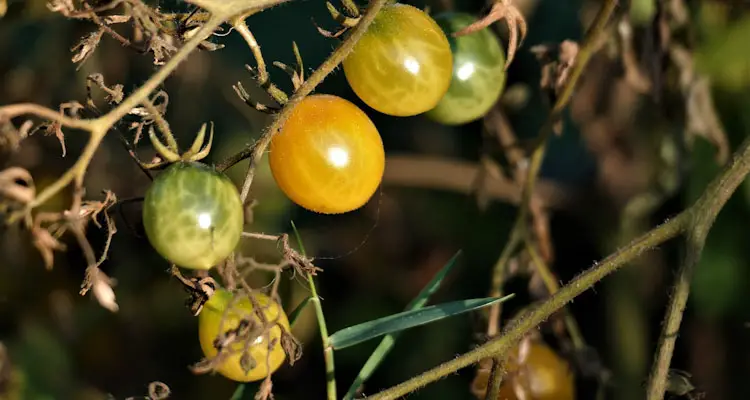After devoting hours of care and attention to growing your tomato plants, the last thing you want to see are their leaves turning yellow. Yet, this is a common problem that almost all tomato gardeners will encounter at some point.
In light of this, the first thing you need to do is to stay calm. Then take some time to try to identify the cause of the yellowing.

Typically, Tomato leaves turn yellow for several reasons, including but not limited to the following:
In this article, we will take a closer look at 5 common reasons why tomato leaves turn yellow; and simple ways to revive your plants when possible.
1. Transplant Shock
Firstly, your tomato plants are most likely experiencing “transplant shock” if you notice that their leaves start to turn yellow shortly after transplanting.
Typically, plants experience different stress levels while trying to get accustomed to their new soil and surroundings. It is common for some leaves to wilt or even turn yellow during this time.

However, a few yellow leaves are nothing to worry about. Especially, if you also notice healthy, green new growth from your seedlings.
Transplant shock is one of the biggest threats to tomato plants. To prevent it, we’d recommend ensuring that the soil is warm enough. You can also apply a microorganism solution before transplanting.
You should remove any yellow leaves from the stem if you were not able to prevent the shock. This will give your plant the energy to feed into any new growth, rather than wasting energy trying to keep the dying leaves alive.
2. Nitrogen Deficiency
Chances are your plants are suffering from nitrogen deficiency if you notice that the older leaves start to turn yellow. Especially if the younger leaves seem green but slightly smaller than usual.
Typically, the older, lower leaves will gradually change color until the entire leaf becomes yellow. In some instances, the growth of the plant will also be affected.
Thankfully, this is easily remedied by applying a nitrogen-rich liquid fertilizer such as Fish Emulsion or JLF to the soil or as a foliar spray. You can expect to see results within a few days.
3. Improper Watering
If you’re seeing yellow leaves all over the plant, you need to pay attention to how you have been watering your tomato plants.
Watering is something that many gardeners need to correct. As with any plant, it’s easy to over or under-water them, which may result in yellow leaves.
Over watering can cause water to accumulate in the soil, suffocating the roots. If the water can’t drain away correctly, there’s a good chance that it’ll cause your plants to rot, which translates to yellowing leaves.
Underwatering can also cause your leaves to turn yellow. This yellowing usually starts at the edge and works towards the middle of the leaf. Eventually, the whole leaf will fall off.
If you suspect this is the case, take a minute to assess your watering habits. We recommend watering in the mornings and applying water around the roots. Avoid watering your tomato plants when the soil is still wet, but don’t allow the earth to be as dry to a crisp.
4. Tomato Plant Diseases
All plants are susceptible to disease, which is why you need to eliminate all the other factors as quickly to catch possible infection before they spread.
For example, if you’ve noticed just one pale yellow spot on your leaves that’s browning around the edges, you’re probably dealing with early blight or similar fungal disease.

If left untreated, these can spread rapidly through the plant and cause severe damage. Unfortunately, not all conditions are easy to tackle once they’ve set in.
Whatever the issues, it’s vital to deal with them quickly. We recommend removing all of the affected leaves or the entire plant if you believe that your tomato plant is suffering from a fungal disease,
When you remove infected leaves, keep them away from other plants in your garden. You could spread the disease if the infected leaves come into contact with other plants. Instead, discard them immediately.
5. End Of The Season
Although there can be some serious reasons why your leaves are turning yellow, there could also be another simple one; the end of the season.
At the end of the season, your tomato leaves will start to yellow as the plant enters another phase of its natural lifecycle. You still need to take care of your plant though.

If this is the case, you’ll need to get rid of dead or dying leaves and gently prune new growth to encourage the last of your tomatoes to ripen.
In temperate regions, Tomato plants tend to fruit from June until the days become shorter as the winter approaches. If your tomato plant produces fruit in September, it may fail to ripen before the first frosts.
See Also: When Is The Best Time To Plant Tomatoes
Final Thoughts
Whether you’re a new or experienced gardener, it’s easy to panic when your healthy tomato plant shows signs of distress.
However, there’s always a reason why your leaves are yellowing, and it’s often easy to manage.
Don’t always assume the worst. If you analyze your plant, watering habits, caring routine, and weather, you can quickly identify the cause.
Ultimately, finding solutions is often a game of trial and error. So don’t be afraid to get things wrong – it’s part of the process!
References
Texas A&M AgriLife Extension Service. Why Are My Tomato Leaves Turning Yellow? agrilifetoday.tamu.edu. Accessed December 2022
